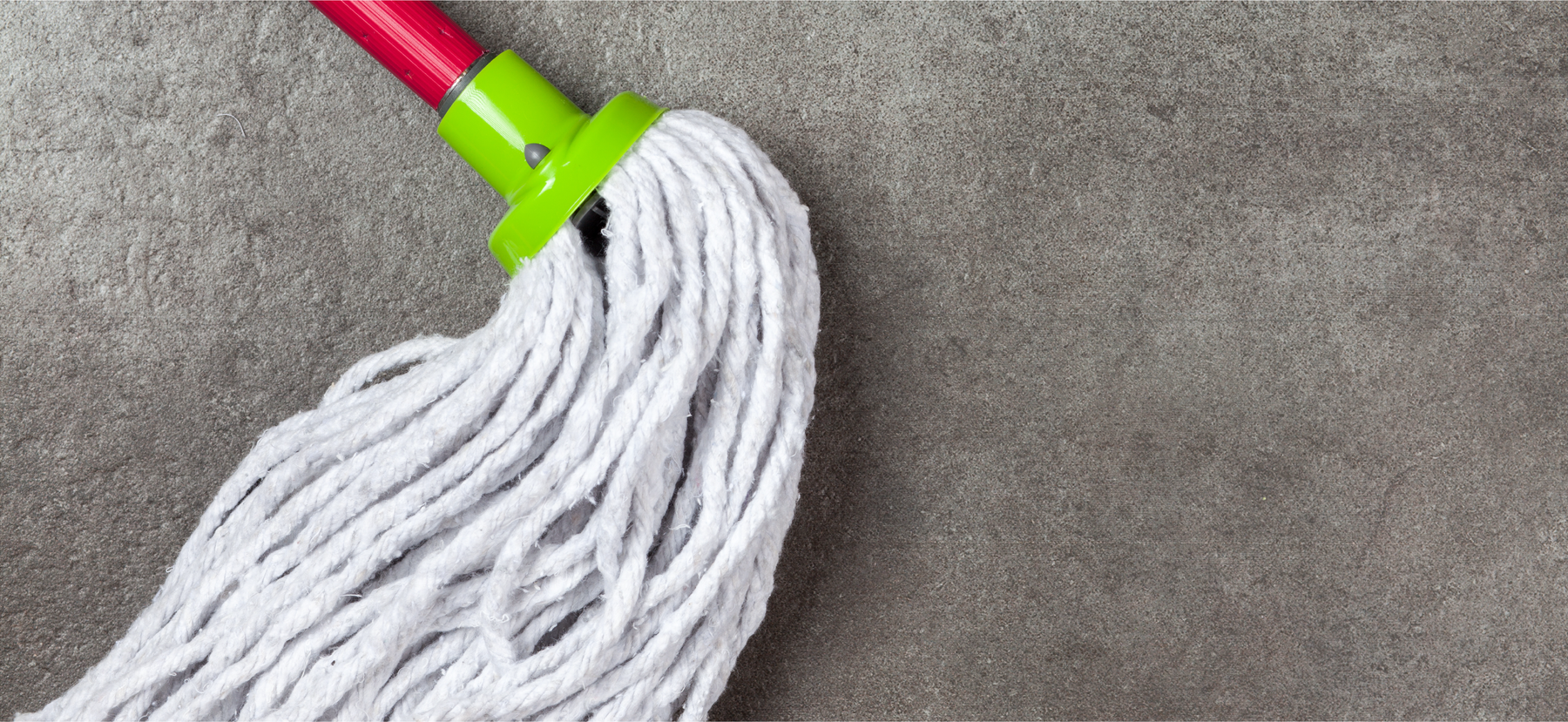
What's Lurking in Your Mop?
We all know facts about cross-contamination, yet in so many facilities, contaminants are spread by the very tools and processes put in place to make and help keep things clean.
Nearly every facility uses washable mops and cloths for cleaning surfaces. The proper cleaning procedures must take place not only when cleaning, but also when caring for cleaning tools.
Proper washing, drying and disinfecting of mops and rags is key to the prevention of disease. In studies dating back as far as 1971, mops were shown to transfer bacteria within hospitals when not handled properly.
So what can you do?- Dry your mops and cloths as quickly and as thoroughly as possible after use. Moisture and ambient temperatures are the perfect breeding ground for bacteria.
- Be sure to separate the mops and cloths that have come into contact with high levels of bacteria or viruses from other cleaning tools. Contact spreads the bacteria.
- Practice good housekeeping by using separate tools for restrooms than for other common areas and kitchens. This may seem like a common sense statement, but many times we grow so accustomed to certain practices that we fail to share them with new staff or we use a contaminated tool to clean within time restrictions.
- Launder your mops and cloths in hot water and use disinfectant detergents on contaminated items.
- Dry your items on high heat for at least 2 hours at 176 degrees (F). This is around 40 degrees warmer than some residential and even some commercial dryers normally run. Be careful – microfiber won’t hold up to that kind of heat.
If you have a high risk area, increase your replacement frequency for mops and cloths, implement pressure washing with disinfectants when possible, and use automatic scrubbing equipment or even steam cleaning to reduce cross-contamination.
Sources:
http://www.issa.com/articles/article-details/all/working-together-to-stop-the-spread-of-disease#.VfnVzdLlvmg
http://www.issa.com/articles/article-details/all/dont-let-bugs-bug-your-customers#.Vfndo9Llvmg

 Protect & Save with SuperFreak.
Protect & Save with SuperFreak.